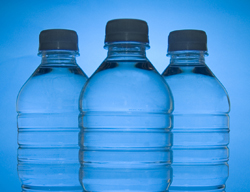
The U.S.-Mexico Border region has recently become difficult to manage due to the overall increase in population. One of the most important goals we need to establish is drastically improving the inadequate drinking water on the border. Border residents are frequently vulnerable to hepatitis A and other diseases that can be contracted through water. If there is a problem concerning the water systems, we need to address them immediately. Access to safe drinking water is an absolute necessity for border residents and also for immigrants trying to to cross. With the increase in the number of homes along the border, domestic water must be free of waste, otherwise disease will spread and health risks will increase. Water standards must be followed and waste must be eliminated. To treat the waste water, we must come up with a plan to build a solid infrastructure that will eventually succeed, making safe drinking water no longer a problem. With the help of regional work groups, we can improve water quality through volunteer assistance, by providing purified drinking water, no matter the weather. Task forces must be assembled to focus primarily on ensuring people have water at all times, and no one dies of heat exhaustion or dehydration. Research must be conducted to give us a better understanding of how many people are drinking contaminated water, and also how many people have recently died of disease along the border.


Pollution is another element that continues to plague border residents, and is also slowly destroying valuable agriculture. Harmful toxic chemicals are contaminating crops and making the environment unsafe and unhealthy for the the entire community. Agricultural pesticide residues are a commonly dangerous problem residents must cope with on a daily basis. The sudden increase of trade on the border has created an active market, which also requires heavy pesticide usage. The demand for agriculture has prompted farmers to plant more seeds, and therefore more pesticide is needed. However, this increase in pesticide is extremely hazardous to residents, especially children. Kids from all ages are being exposed to chemicals that should never enter their lungs. It is a high priority issue that needs to addressed as soon as possible. Hazardous waste is another problem that continues to make the border unsuitable for children. In some areas along the border, people are told not to go too far from their homes because of the airborne toxins. Children cannot even go outdoors because the environment is polluted.
It is important to protect the border residents and also protect their privacy. There have been several reports of immigrants coming into the backyards of residents, and drinking their clean water. This would not be a frequent problem if we could restructure the water system, allowing purified water to become more available. Having a clean water system is a necessity for any modern society, and the surrounding border communities are no different. As mentioned above, water task force teams would greatly improve the current border situation and take some pressure off of Border Patrol (http://www.cbp.gov/).
If we are going to make any significant progress, the United States government needs to establish healthy and working relationships with organizations that truly care about cleaning up the border. By contacting financially responsible institutions, the community can work together and cooperate with an organization in an effort to successfully construct a sustainable water system. If the system is successful, the border residents will be satisfied, and sanitation will no longer be an issue.
No comments:
Post a Comment